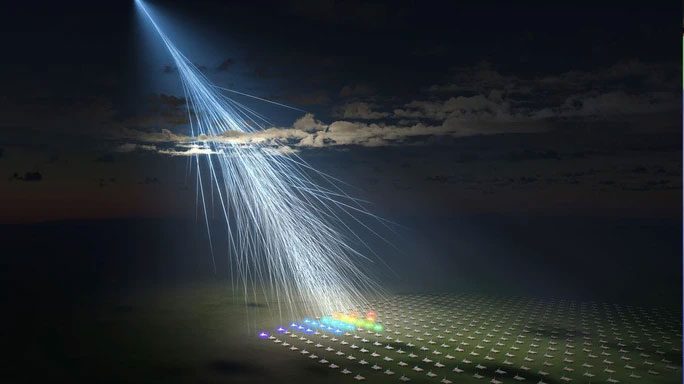Researchers have revealed that this is an extremely high-energy cosmic ray, the strongest since the “Oh My God” particle was discovered in 1991. It appears to originate from the most mysterious “void” in the universe.
The cosmic ray referred to in the new study was detected on May 21, 2021, by the Telescope Array, a network of observatories spread across an area of 700 km2 in Utah, USA.
The special particle that forms this cosmic ray has an enormous energy of 244 EeV, making it the strongest cosmic ray ever detected since the famous Oh My God particle (OMG) in 1991 (with an energy of 320 EeV).

Graphic representation of the “Goddess” cosmic ray – (Image: OMU).
Researchers from Osaka Metropolitan University (OMU) in Japan described this cosmic ray in a recently published scientific paper in the journal Science.
The mysterious particle that comprises the 2021 cosmic ray has been named “Amaterasu”, after the Sun Goddess who is said to have created Japan in mythology.
“When I first detected this ultra-high-energy cosmic ray (UHE), I initially thought there must have been a mistake because it shows unprecedented energy levels not seen in three decades,” said Dr. Toshihiro Fujii, the lead author.
They are uncertain about the origin of this ray, as its direction seems to point back to a void in the large-scale structure of the universe, an area devoid of known galaxies, nebulae, or other cosmic structures.
It is possible that it was deflected on its way, passing through a strong magnetic field of some object. However, this possibility is low due to the particle’s immense strength.
Some hypotheses regarding the ray’s origin include a supernova explosion or the merger of a neutron star with a black hole (an extremely powerful type of neutron star, the remnants of massive stars); however, none can fully explain the event.
“This particle may originate from an unknown astronomical phenomenon and possess a new physical origin that goes beyond the Standard Model in physics,” Dr. Fujii remarked.





















































